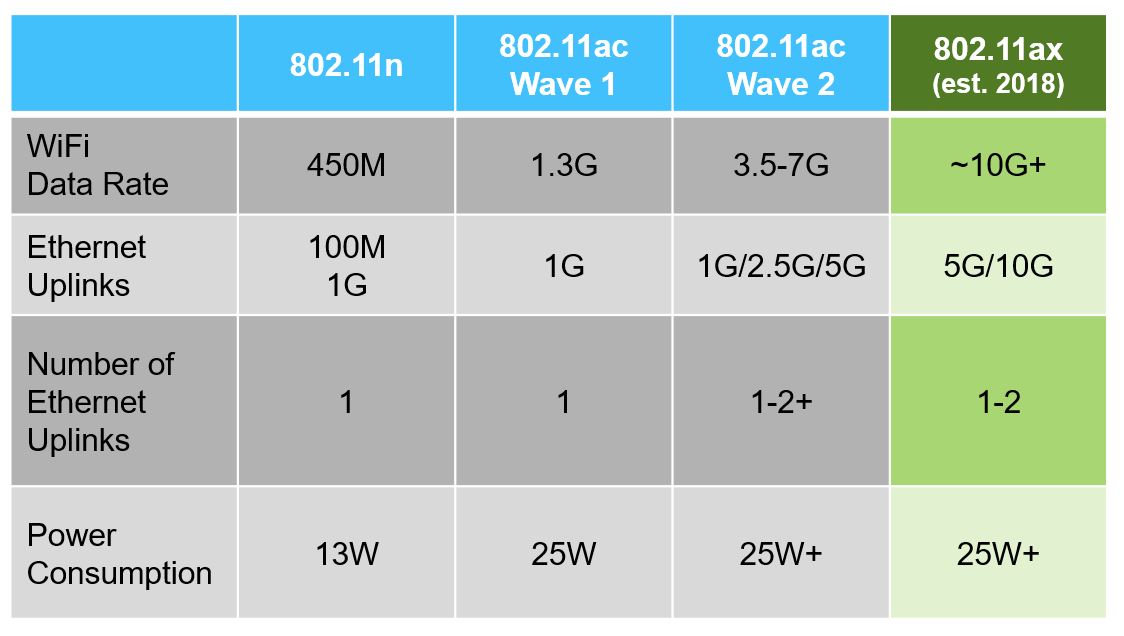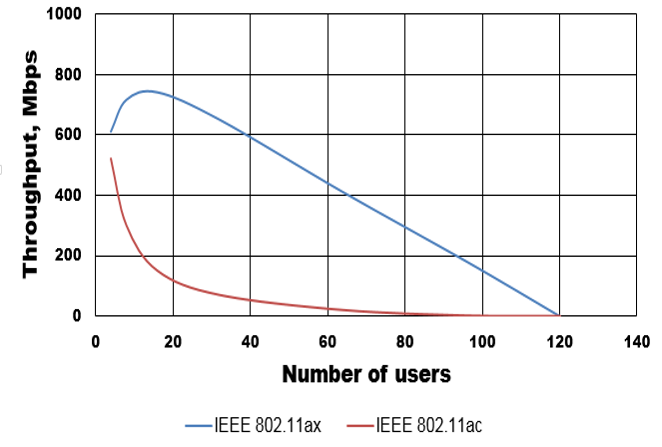IEEE 802.11ax — The New WiFi Standard
With the increasing numbers of devices and users hitting our networks, high-efficiency wireless is becoming a necessity. Otherwise, when too many people attempt to connect, network speed slows down. This decrease in speed isn't necessarily because the network speed itself is slow - it's because of network congestion and overuse.
I actually experienced this first-hand at the parade held for the Cubs when they won the World Series last year. Because of the large numbers of people (almost 5 million) trying to use their devices to connect to networks, it was difficult to do anything with a smartphone – whether you needed to find the fastest route back to your hotel, call a friend, locate a nearby restaurant or text a picture.
In high-density venues, such as sports stadiums and arenas, hotels, airports, high-rises and college dorms, users need consistent, reliable access indoors and outdoors – regardless of how many other people or devices may be trying to connect and transfer data at the same time.

As more users connect to a wireless access point, throughput decreases.
A New Wi-Fi Standard
To give multi-user applications more wireless speed and reliability, a new Wi-Fi standard - IEEE 802.11ax - is set to alleviate the frustration associated with network overuse. It will offer 10G speed capabilities, along with the ability for many people to be on a network at the same time with higher speed and fewer connectivity problems.
The goal of this new Wi-Fi standard is to improve average throughput per user by a factor of at least four in dense environments as compared to the current Wi-Fi standard: IEEE 802.11ac.

Specifications for wireless access points.
Improving Wireless Throughput
Previous Wi-Fi standards have understandably focused on the need for faster wireless connections. The current standard, for example, offers wireless speeds of 7G through multi-user, multiple-input, multiple-output (MU-MIMO) technology.
But as more users join a network using this technology, data rates and throughput are compromised. Only one user gets to experience the network at its full throughput capacity. The throughput is cut in half every time another user joins.
There are three ways to address this issue:
- Deploy more wireless networks
- Increase the speed of existing networks
- Improve throughput
The new 802.11ax Wi-Fi standard combines cellular data carrier technology with the IEEE 802.11ac Wave 2 standard to improve wireless throughput. It will operate in the 2.4GHz and 5GHz unlicensed bands, and also make use of MU-MIMO to address multiple simultaneous users. In addition, users will be multiplexed in frequency using Orthogonal Frequency-Division Multiple Access (OFDMA).

Comparison of throughput: IEEE 802.11ac vs. IEEE 802.11ax.
Source: AP-initiated Multi-User Transmissions in IEEE 802.11ax WLANs, Boris Bellalta and Katarzyna Kosek-Szott, arXiv:1702.05397v1, Feb. 17, 2017
Wireless Coverage vs. Connectivity
With this new Wi-Fi standard, network administrators will no longer plan solely for wireless coverage – they’ll plan for connectivity throughput (how many people will be able to connect and at what speed). In order for the multiplexing to work properly, more wireless access points (WAPs) will be needed than with previous Wi-Fi standards – simply replacing WAPs for newer models won’t cut it.
Access points will be positioned closer together, covering smaller areas, to ensure high signal quality (which is required by 1024 QAM modulation to support better throughput because it works at a shorter range).
And, of course, more wireless access points will ultimately mean that more cables will be necessary. Cables will need to support Power over Ethernet (PoE) and higher data rates to make this new Wi-Fi standard possible.
IEEE 802.11ax is currently under development, and is expected to be complete in June 2019. As we learn more about it, we’ll be sure to share updates with you. Subscribe to receive our blogs as they’re released so you don’t miss a thing! In the meantime, learn about how Belden can support your wireless network.
